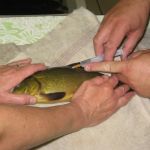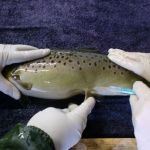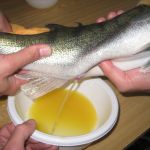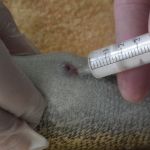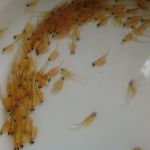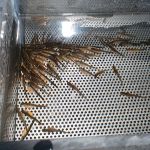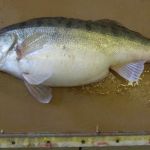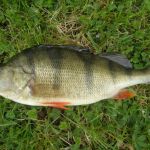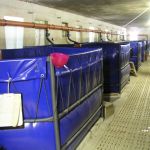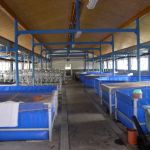
Research Institute of fish Culture and Hydrobiology /RIFCH/
About Laboratory of Intensive Aquaculture
Artificial reproduction of commercially important fish species
The combination of captivity-induced stress and lack of the appropriate natural spawning environment can result into reproductive dysfunction in farmed fish species. In order to repair these reproductive dysfunctions or conduct an out-of-season spawning different hormonal preparations are tested based either on gonadotropins (Carp pituitary and hCG) or hypothalamic factors (synthetic analogue of GnRH and Dopamine inhibitor). In addition to the type of hormonal preparation the research is focused also on the release dynamic of active hormonal substance from various carriers (short or long term release carriers). Laboratory deals with the research program of centre CENAKVA WP 3 Innovation of intensive production methods of economically important fish species and species important for angling.
Hormonal control of gametogenesis and its influence on gamete quality
The potency of various hormonal preparations is evaluated on the basis of hormone concentration measurement (LH, E2, 11-KT) and ability to induce oogenesis or spermiogenesis. The method of fertilization and subsequent incubation are investigated in order to maximize viable fry production. In vivo and in vitro techniques are employed to observe egg morphological, biochemical and histological changes through post-ovulatory and post-stripping oocyte ageing.
Improvement of grow-out techniques for commercially important fish species
Increasing demand for fish fry for aquaculture and restocking has driven research aimed at improving all grow-out aspects in fish fry culture like nutrition or the environmental conditions. Between the main fish performance characteristics evaluated in our laboratory belong growth rate, feed conversion rate, diseases and stress resistance. Other experimental methods used to optimize aquaculture production are triploidization, tetraploidization, monosex populations, selection of the fastest growing individuals and intraspecific hybridization of individuals from different geographical locations.
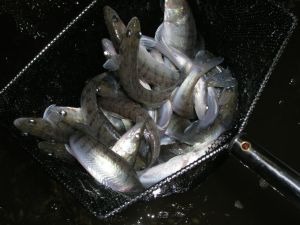
Studied fish species
Currently are under investigation and developing of best production methods following fish species: Pikeperch (Sander lucioperca), Northern pike (Esox lucius), Eurasian perch (Perca fluviatilis), Burbot (Lota lota), Brook trout (Salvelinus fontinalis), Arctic char (Salvelinus alpinus), Tench (Tinca tinca) and Clown loach (Chromobotia macracanthus).
Pikeperch (Sander lucioperca, left) and eurasian perch (Perca fluviatilis, right)
Cooperation with aquaculture industry
Our laboratory cooperates closely with fish farmers on improvement of current aquaculture methods and promotes culture of new and promising fish species in Czech Republic. Successful research activities are connected with mass production of high-quality stocking material of valuable fish species for open waters and intensive aquaculture.
Staff and contacts

